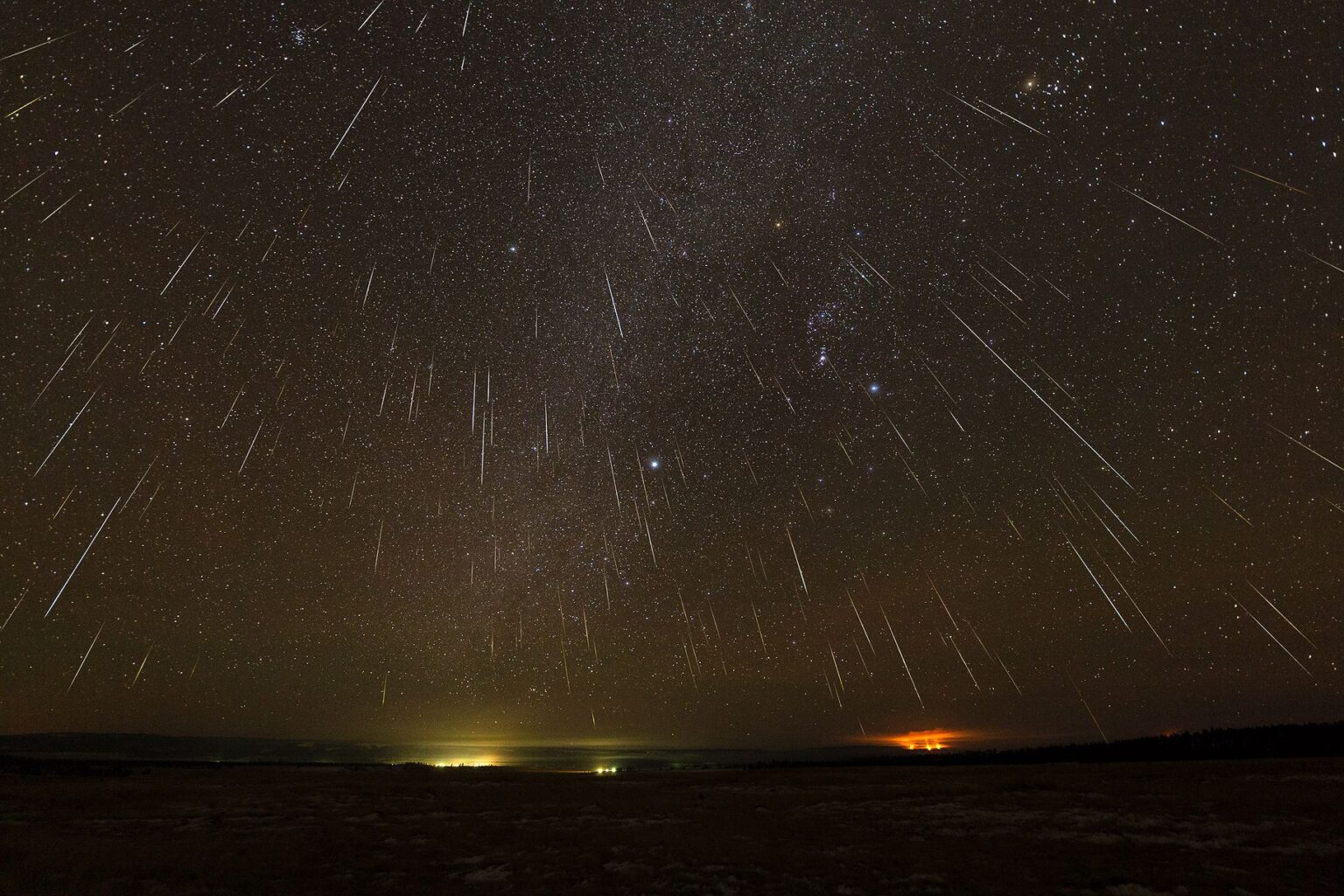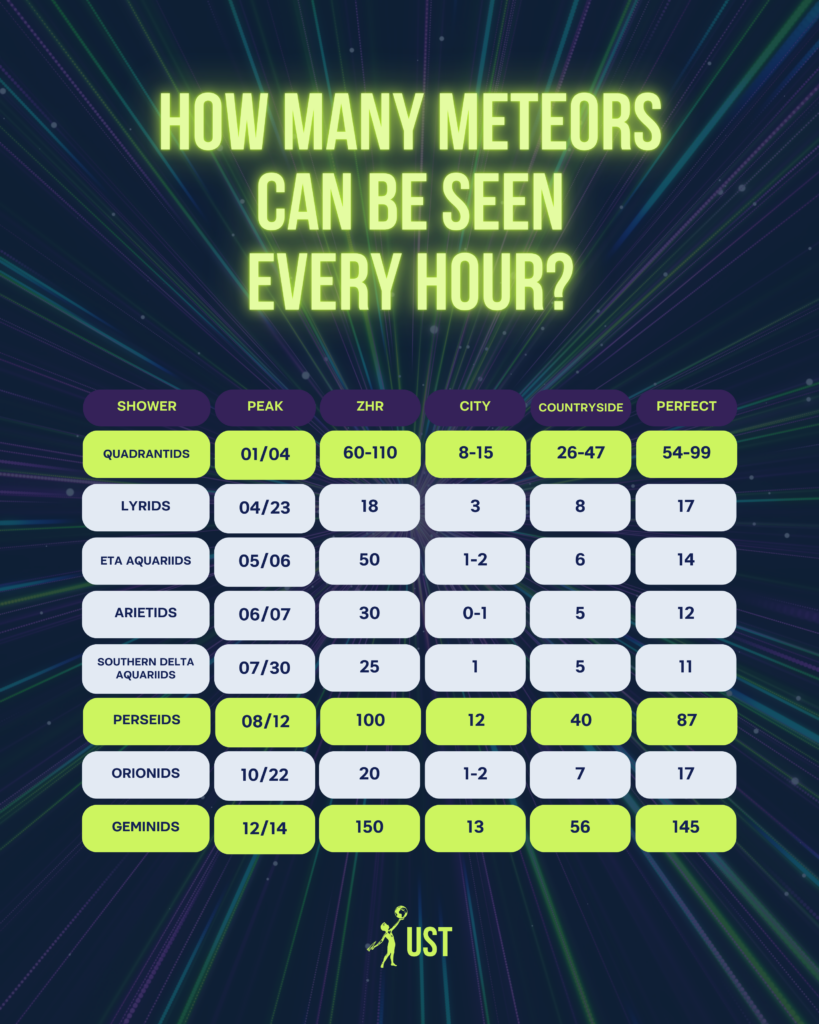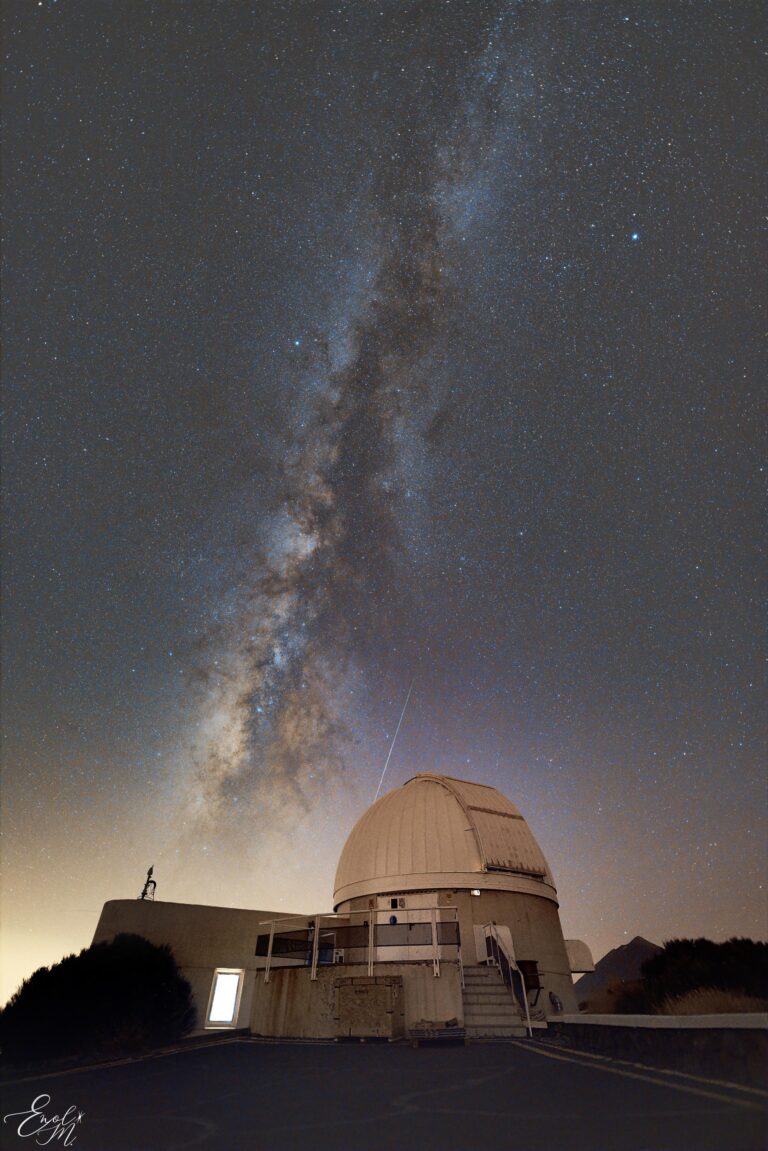Among the most exciting annual astronomical events that we all look forward to are, of course, meteor showers. You don’t need binoculars, a telescope, or any other specific equipment to enjoy” shooting stars” – a clear dark sky overhead is enough.
Bright unpredictable lines against the velvet sky leave no one indifferent. We have a chance to see a meteor every clear night. But the most meteors occur during abundant meteor showers, the most powerful of which are the Geminids, Quadrantids and Perseids. Although the Geminids and Quadrantids are more active than the Perseids, the latter ones have become the most popular since, compared to the first two showers observed in winter, the Perseids peak in August.

When planning observations, you have probably encountered a characteristic such as ZHR. For example, according to official data, ZHR =100 for the Perseids. Many sources interpret this value as the number of meteors you can see in an hour during the shower’s maximum activity. But in fact, this is not the case at all.
What is ZHR?
ZHR (Zenithal Hourly Rate) is a very idealized parameter. It indicates how many meteors an observer could theoretically see in an hour in a perfectly dark, completely open sky if the radiant of the shower (the imaginary region of meteor flight) were at the zenith. In practice, none of these conditions are usually realized: the radiant is almost never exactly over our heads; dark skies where stars up to stellar magnitude 6.5m can be seen are extremely rare, and we probably can’t see the whole sky. Therefore, we see significantly less meteors than the ZHR indicates. In fact, the ZHR was introduced as a parameter to compare results provided by different observers.
Here’s a look at how ZHR is calculated:

HR is the actual number of meteors seen per hour by the observer;
r is the so-called population index, which is individualized for each meteor shower; it usually takes values between 2 and 3.5;
m is the limiting stellar magnitude, the brightness of the faintest stars you can see in the sky;
f is a part of the sky available for observation;
h is a height at which the radiant is located.
In the sky of a countryside or on its outskirts, it is common to see stars anywhere up to 5.5m. If you observe, for example, the peak of the Perseid shower at 3-4 a.m., when the radiant is at ~60° altitude, and you cover half the sky with your gaze, you will probably see… only about 20 meteors in an hour! But by putting these values into the above formula, you exactly get ZHR ≈ 100.
How many meteors can you actually see?
So, we now know that ZHR doesn’t provide an answer to this question. But by using the formula to calculate the ZHR, we can find out how many meteors we can actually expect.
The table below summarizes the characteristics of several of the most abundant stable meteor showers that can be observed throughout the year. The last three columns are the approximate number of meteors that can be seen across the sky in an hour under certain conditions. The calculations were made on the basis that stars as bright as 4m can be seen in a city sky, up to 5.5m in a countryside sky, and up to 6.6m in a perfect sky. Keep in mind that the dates of maximum activity may vary slightly, so it is worth comparing with the Meteor Calendar for the current year on the website of the International Meteor Organization.

It’s a pleasant fact that the meteors you see on the night of the peak of any shower are usually joined by some meteors from other less active showers, as well as so-called sporadic meteors that don’t belong to any shower. According to the Meteor Data Center, a total of 110 meteor showers are known today, and more than 700 others are either temporary or awaiting confirmation. Most of these showers demonstrate very low activity with the ZHR <3.

How can you see as many “shooting stars” as possible?
To really enjoy the spectacular sight of an abundant meteor shower, you need to get out of your city. Make sure it’s worth it! Light pollution will radically affect your nightly “catch”. It is better to choose the observation place so that you don’t see bright point sources of light – streetlights, windows, car headlights. If there is the moon in the sky, try to hide from it in the shadows. But the most meteors will be seen when our moon is not in the sky. Give your eyes time to adapt to the darkness. Full adaptation is reached after at least 20 minutes.

If such conditions are not possible, choose the direction of observation where light pollution is minimal – meteors will appear suddenly across the sky.
Prepare in advance for comfortable observation conditions: a tourist mat or a folding lounge chair will definitely come in handy. It’s also great to have tea or coffee in a thermos and some yummy treats with you.
Finally, I would like to wish you clear skies, abundant meteor showers and effective observations!


